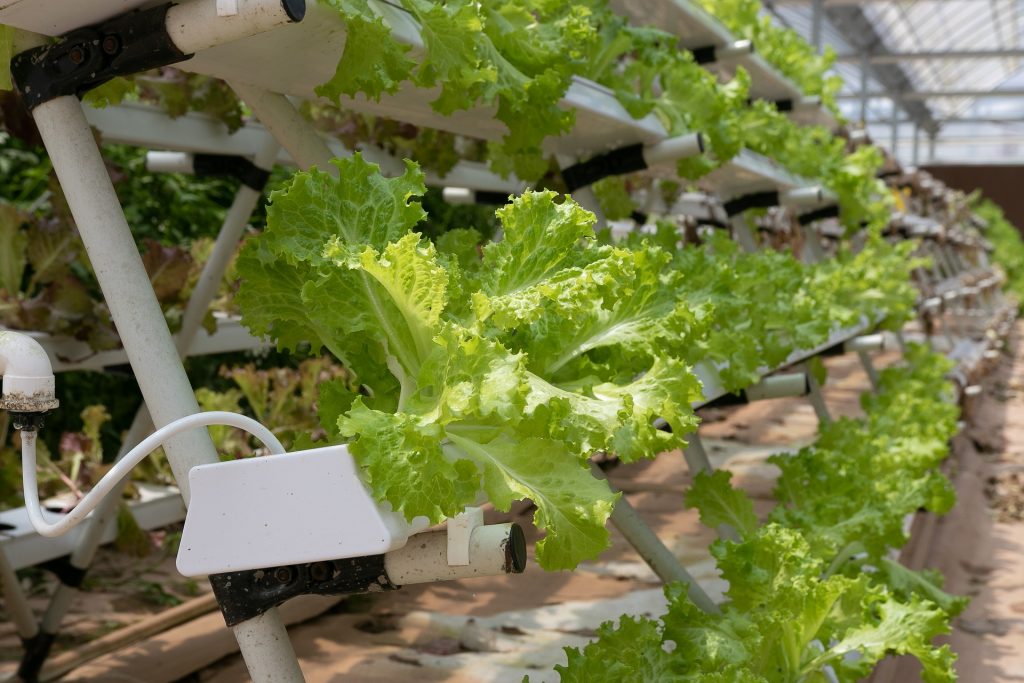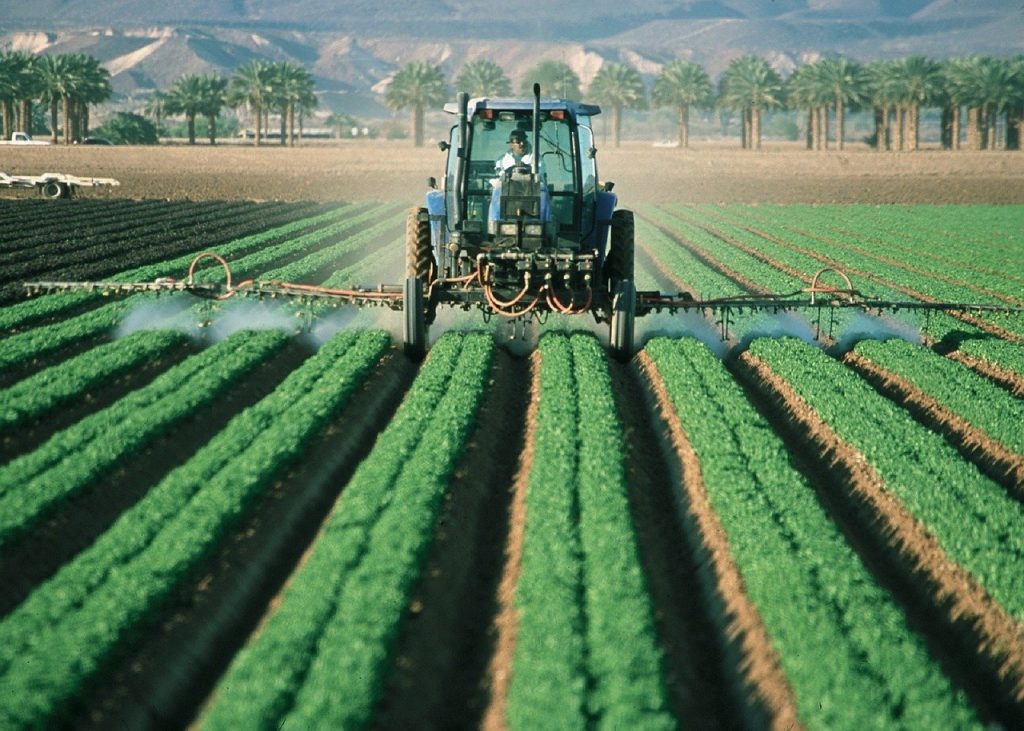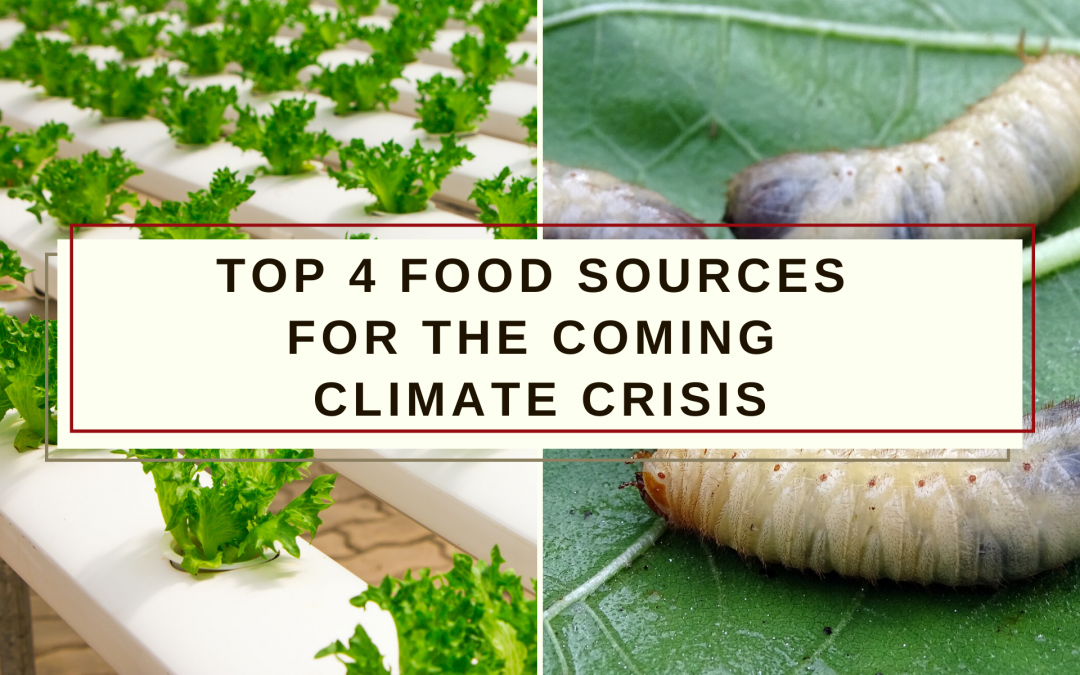The earth continues to heat up faster than ever before in its history. The resulting impacts on our climate put us at an ever-increasing risk of crop failures and food shortages. Several factors come into play here. Check out our post about the necessity of stockpiling food to find out why.
In this post, we want to take a look at what will be the top sources of food in the years and decades to come.
1. Aquaponic and Hydroponic Indoor-Gardens

Hydroponics allow for vertical gardening
As outdoor conditions become harder and more unpredictable, food will have to be grown in controlled environments indoors.
In a Hydroponic system, vegetables are grown without soil. Instead, the plants get nutrients directly from nutrient-rich water in a closed-loop system.
While chemical fertilizers and nutrient solutions can be used, the more sustainable option is to use fish excrement in an Aquaponic system. This way, nutrient-rich water from a fish tank is filtered and used to feed a hydroculture of vegetables. The now freshly cleaned water is pumped back into the fish tank. Besides vegetables, you can also harvest healthy, protein-rich fish!
Sounds too good to be true?
Well, there are a few catches. The system requires constant electrical power to run the pumps and a lot of experience to keep it in a stable condition.
Nonetheless, the yields can be amazing and reliably provide you and your family with fresh food and fish.
We will delve into Aquaponics in detail in upcoming posts, so stay tuned!
2. Hunting

Hunting for wild boars to protect crops near a cornfield
On one hand, many species will struggle with adapting to the quickly changing climate.
On the other hand, some wild animals will temporarily benefit from it.
This is especially true for the more northern latitudes, where certain species can benefit from milder winters.
I can confirm from my personal experience as a hunter that wild boars are constantly increasing in population in central Europe. Due to warmer climates, they even start to populate areas formerly too cold for them, like low mountain ranges and uplands.
Hunting wild game animals like these will not only help to balance the fragile and already stressed ecosystem, it will also provide people with a high-quality food source.
3. Insects
Many people are grossed out by the idea of eating insects. This will most likely change once food becomes scarce and they go hungry.
Not only are insects a rich source of nutrients. They have also proven to be very resilient to harsh conditions, surviving in many different climates all over the world. On top, they are easy to reproduce and farm and they don’t require much space.
One example of a very useful insect is the Black Soldiers Fly. They spread no diseases and can live off human waste products. The larvae can be directly cooked and eaten or used as fodder for livestock or fish in an aquaponic system. In some parts of the world, they are already part of the traditional diet.
4. Traditional Agriculture

Traditional agriculture will have a hard time
Growing food in the usual, industrial fashion is already becoming increasingly challenging. The 2018 drought in Central Europe was one the worst ones on record. It caused crop failures and bad harvests in most European countries. Now, in the early summer of 2020, it is looking like another extremely dry year. Already, fruit trees and wheat fields are failing, and farmers fear another bad harvest in many areas.
Meanwhile, large parts of the US Midwest took a harsh beating by torrential rains and flooding in 2019, also destroying many fields and causing the loss of crops.
Large-scale, industrial agriculture is highly inflexible and slow to react to unexpected conditions.
Nonetheless, the vast majority of global food is still produced this way. Even when some parts of the world are suffering from drought or flooding, other areas will have a good year and produce food.
While this may not be enough to feed the entire nations in the long run, people living in rural areas may get their share of traditionally harvested food quite some time yet.
5. Bonus Source: Your Food Storage!
I know this is not a sustainable source of food BUT as I have mentioned before:
If you stockpile non-perishable Foods now (while they are still extremely cheap) you will benefit from it in the coming hard times!
So, make sure to check out this post about how much food you should have stored to learn more.
Keep your eyes open and adapt
The points I have mentioned above are merely ideas and suggestions. You should always keep in mind that nothing is certain with climate change. There is much we don’t understand yet and even more, we are unable to predict. Keep your eyes and mind open, remain flexible, and adapt to any situation and challenge you will face. This is what is going to make the difference between dying, surviving, and thriving.


Trackbacks/Pingbacks